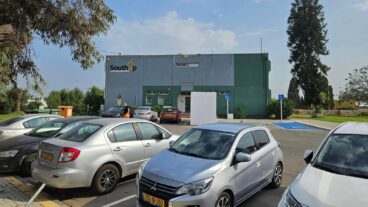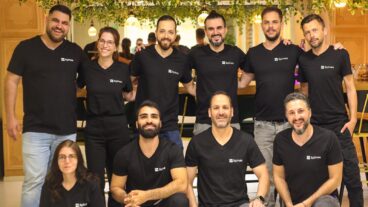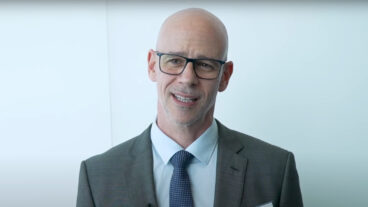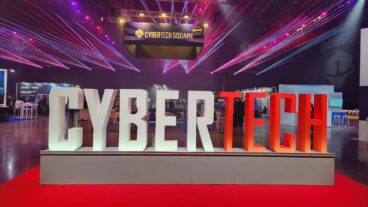The BrightStar program combines one-on-one special needs teaching with innovative technology. A father and son team from Israel has patented an innovative technology called Brightstar that is helping thousands of Americans overcome dyslexia.
Dyslexia is a neurologically-based, often familial, disorder which interferes with the acquisition and processing of language. Varying in degrees of severity, it is manifested by difficulties in receptive and expressive language, including phonological processing, in reading, writing, spelling, handwriting, and sometimes in arithmetic.
US government statistics show 25 million Americans are functionally illiterate, with the primary cause being dyslexia or one of its many variations.
42-year-old Yossi Kullok and his father Saul invested 11 years of research and development in Israel before unveiling BrightStar Technology in 2001.
BrightStar is the first prototype of its kind to use non-invasive technology to help with those suffering not only from dyslexia, but also other neurological disorders including ADHD and dyspraxia.
Patented by the Kulloks in the United Kingdom, their company – Epoch Innovations – has made inroads in working with dyslexics throughout Britain, and is recognized by the British Dyslexics Association.
But the Kulloks’ success is not just limited to the UK. BrightStar is now also based in Palo Alto in northern California, where Americans have benefited from the technology over the last two years.
Kullok came to Israel from Buenos Aires with his family when he was 12, and says he is proud of the fact that he represents the third generation in his family to dedicated their life to developing non-invasive technology for those with learning disabilities.
Kullok and his father began their research in Israel back in the 1980s into how the heart works – specifically heart contractions – gradually moving into Heart Rate Viability (HRV) and how the autonomic nervous system works.
In 1999 the father and son duo developed an audiovisual program called bio tuning – a non-invasive technology designed to treat children with ADHD. The program was based on biofeedback and computerized interactive AV stimulation synchronized to the heart. A pilot study was conducted at Sarah Herzog hospital, with the findings published in the Israeli Journal of Psychiatry.
It was this work that resulted in the Kulloks being invited to London to create BrightStar. The successful prototype was tested at Nottingham University, paving the way for the company to branch out to the US.
The BrightStar program itself is a combination of one-on-one special needs teaching and the Kulloks’ innovative technology.
Twice a week for six weeks, participants undergo a 20-minute program. Through the use of light via a computer screen, the BrightStar technology targets specific areas of the brain, designed to improve the underlying neurological processing abilities of the dyslexic person.
Participants are hooked up to a heart rate monitor as, flashing lights appear on the computer screen in front of them, exercising ocular tracking, aligning neural pathways and stimulating the cerebellum while the participant performs a series of basic computer exercises. During the exercises, the BrightStar technology stimulates the areas of the brain responsible for reading, writing and spelling.
It may sound like something out of a futuristic science fiction tale, but according to Kullok, it is not.
“What we’re doing is trying to approach the neurological functions directly,” he told ISRAEL21c. “Seventy-five percent of dyslexia is due to phonological (hearing) dysfunction.
When dyslexics hear words, he explains, they can’t separate them into consonants and vowels.
The remaining 25 percent of dyslexia is due to visual impairment.
“There are cells in the eye that process information and are sent to areas such as the cerebellum, which are imperative for the programming of eye movement when reading,” says Kollek.
When there’s a deficiency, he says, the eye cannot focus on the information and extract the relevant data needed for reading fluency and comprehension. That’s where BrightStar comes in.
In his research, Kullok discovered that if sensory stimulation is synchronized to the physiological timings of the body, then a window of opportunity opens up for the information that is contained in the stimuli to reach the autonomic nervous system.
“We are bombarded all day by all kinds of stimulation, but it’s not synchronized,” explains Kullok. “BrightStar times the delivery of the stimulation — be it sound or light — to the individual’s heartbeat.”
As a result, when the heart contracts, it allows an individual’s perception to grab and transfer the information with minimal obstacles to the different stations of the brain.
“That way the eye movements are programmed correctly at the right moment and the eye will fixate automatically,” says Kullok.
Where BrightStar is successful is in helping the brain convert information from the visual to the aural. “When you read something silently you actually voice what you’re reading in your head,” explains Kullok. But dyslexics can’t do that.
In the four years that BrightStar has been operational in both the UK and the US, Kullok says the company has managed to statistically measure the average improvement of children in five key measures after only six weeks.
In addition, he says, the benefits of the program have been measured and have shown the effects of the technology to last for eight months.
“Our aim is to invest a lot of money to prove scientifically that this program works,” says Kullok. “We’re still at the beginning stages, but we have five internal studies being undertaken this summer, and we aim to make this a sound scientific proof.”
Kullok says while his father still remains in Israel, he made the move to Palo Alto with his wife and children, because the company hopes to make an international impact with its technology.
“The US is the place to be. And in Palo Alto we’re dominated by Stanford University. We want to make an impact on the world with BrightStar and to be successful both clinically and commercially. And if we can do that here, we’re almost guaranteed success in other places.”
Kullok and his family plan to move back home to Israel within the next six to twelve months, once BrightStar can function at full capacity without him at the helm.
“As an Israeli I have always wanted to bring credibility and fame to Israel in some way,” says Kullok. “It’s always been my personal aspiration, for people to think more positively about Israel and the things we do there.”
Kullok has plans to work on other startups in Israel in an effort to make a contribution in other areas of neurology, possibly in the fields of Alzheimer’s or autism.
Kullok believes it’s his mission to help people and to give back to people. “My father was very successful in Buenos Aires, but we came to Israel in 1976 because he said he’d rather give his efforts to Israel, and I feel the same way.”
Ultimately, Kullok’s goal is to change one life at a time. “I owe Israel,” he says. “Israel has been the incubator of all my ideas and I just want to be able to continue to contribute.”












